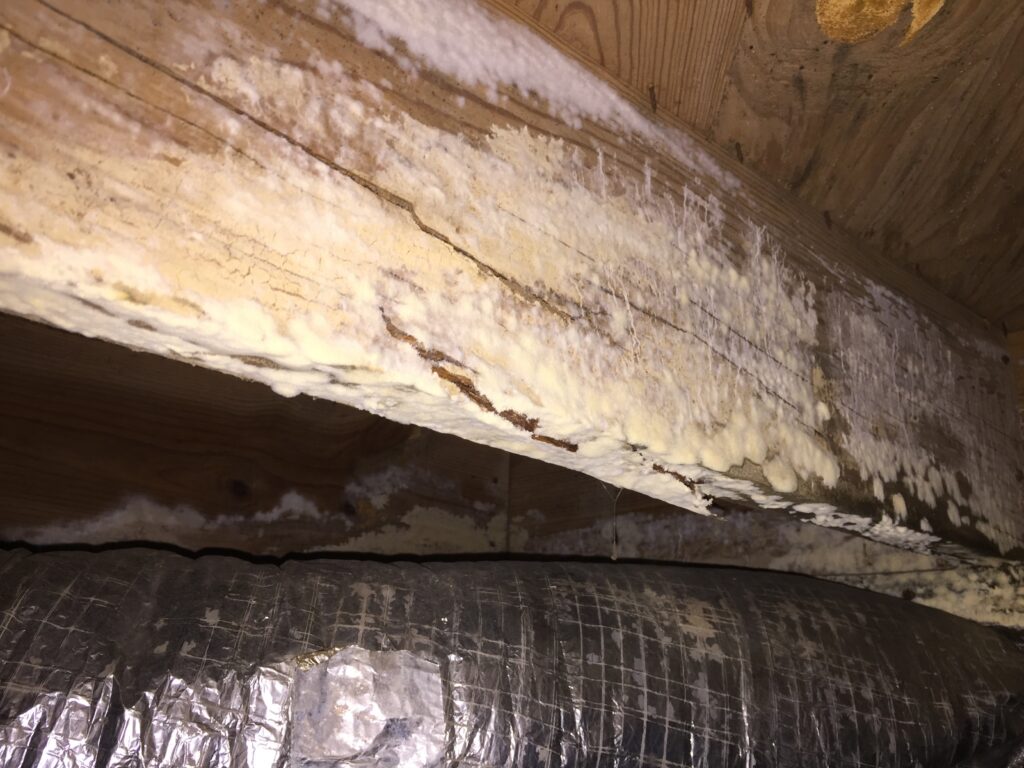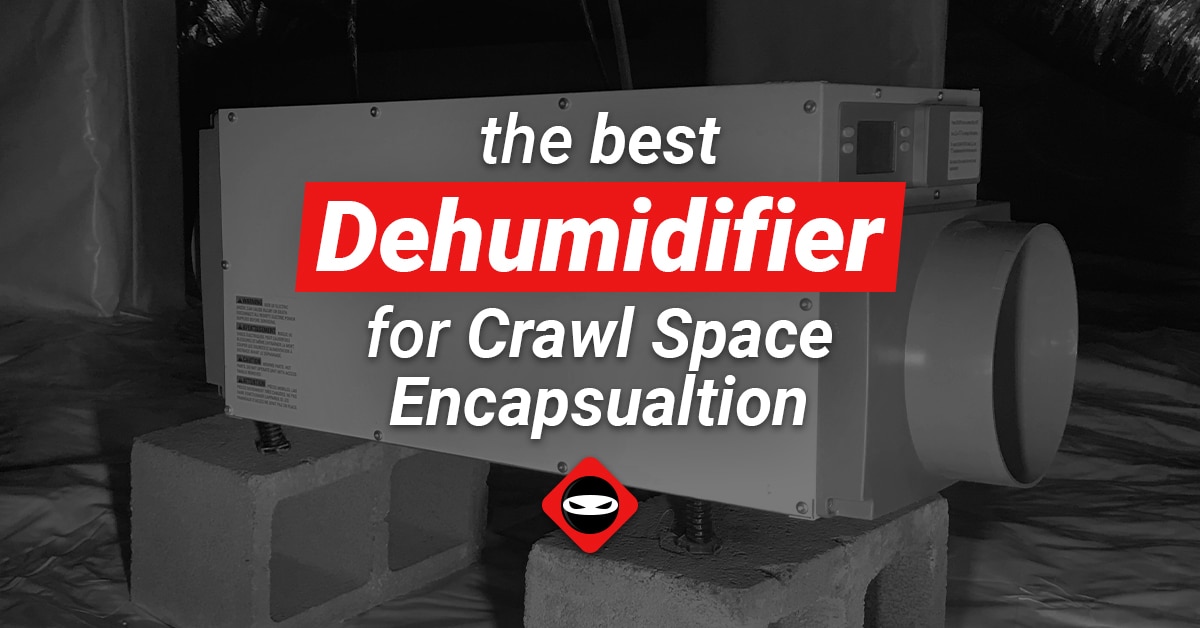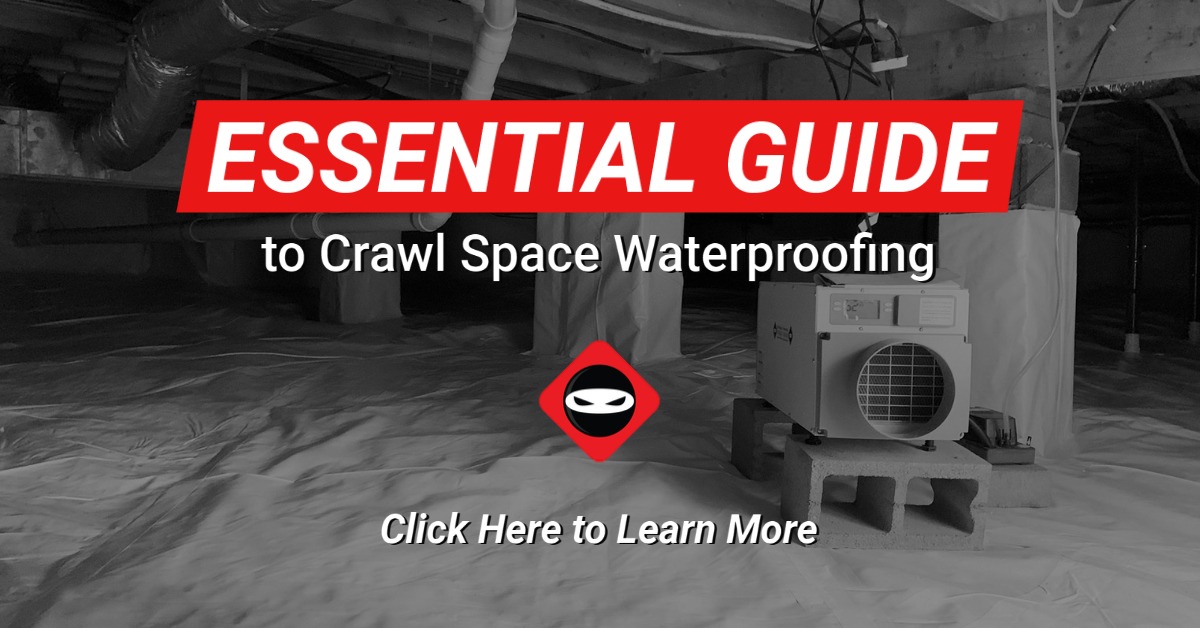The Essential Guide to Wood Rot Fungus is designed to help determine if your home is at risk and what to do to treat and prevent damage.
Many homeowners we help have mold and wood rot fungus due to water leaks, flooding, and high humidity problems. This guide will focus mainly on crawl spaces and basements as sources for wood rot otherwise known as dry rot. This guide can be applied to other areas of the home like attics, exterior doors, areas containing water heaters, washing machines, HVAC (Heating Ventilation and Air Conditioning) systems, refrigerators, windows, toilets, and more. Please comment below and follow us on Facebook and YouTube to learn more about improving your home by improving your crawl spaces and basements.
Wood Rot Table of Contents
- What is Wood Rot?
- Is Wood Rot a Health Concern?
- What Causes Wood Rot
- How Does Wood Rot Affect My Home
- Finding Wood Rot Fungus
- How to Stop and Prevent Wood Rot
- Choosing a Crawl Space Encapsulation Contractor
1. What is Wood Rot Fungus
Wood rot fungi or xylophagous fungus is simply a mold or fungi that feeds on wood in the environment. Just like the tinder fungus you see on fallen trees as you walk that hiking trail you love is designed to break down the wood and return it to the earth, wood rot is trying to break down your home which is a very expensive and destructive silent enemy.
What’s interesting about wood rot fungi is it is called xylophagous fungus. This means it is an animal that feeds on wood like a beetle or termite. I used to think it was a plant, but it has the survival instincts of an animal. Just like termites destroy your home’s structure from the inside out, wood rot fungus operates similarly to strip the meaty parts of your wood and leave nothing but a shell behind that needs to be replaced because there is no restoring it.
Ready to find out more?
Drop us a line today for a quote!
Click Here1.1 Brown Wood Rot Fungus
Brown wood rot fungus is very destructive to your sub-floor, joists, roof rafters, and more. It feeds on the cellulose parts of your home’s wood structure. The eating away of the cellulose in the wood can weaken the wood and create major structural issues leading to sagging floors, bouncing floors and sagging shingles. Large areas of cellulose can be damaged even outside where the brown wood rot is visibly located. Because of the, the entire area of the space should be treated to ensure all rot is addressed. Brown wood rot likes temperatures between 60 and 90 degrees Fahrenheit and spreads quickly.
1.2 White Wood Rot Fungus
White wood rot fungus is many times white or even yellow in color and sometimes appears wet on the surface of the wood. We have found wood rot molds that appear to be a shaving cream consistency and once removed leave holes similar to beetles boring in the wood. Brown wood rot attacks hemicellulose and cellulose, but white wood rot attacks the wood’s lignin. White rot also likes similar temperatures as brown rot and is very destructive. As shown below, oftentimes joists break from the weight of the living space contents in an affected area.

1.3 Soft Rot Mold
Soft rot fungi break down wood more slowly but are not commonly found in homes. It thrives in temperatures more extreme than brown rot or white rot can live, from 0 degrees to up to 110 degrees Fahrenheit. Soft rot attacks cellulose as well and often times shows a honeycomb pattern in the wood. Soft rot secretes an enzyme to break down the cellulose and looks similar to brown rot.
1.4 Dry Rot Mold
Another name for brown rot wood decay fungus is dry rot. Unlike white rot wood decay mold that appears wet, brown rot many times appears dry or even powdery to the touch.
2. Is Wood Decay Fungus Dangerous
Keep in mind that the intent of wood rot fungus is to eat the wood it resides on, therefore destroying the wood in your home. So it is dangerous to your home but, that being said, any mold or fungi that is disturbed, burned, or touched can become airborne and ingested in the body. If you ingest mold or fungi spores in your lungs or eyes, you may develop a mild to severe allergic reaction depending on your immune system, or you may have no reaction at all. Some people are so allergic to mold that if it touches the skin they develop a rash or even fungal infections.
2.1 Mold Versus Wood Decay Fungus
This article focuses on wood rot but many times brown rot, white rot, and dry rot inhabit the same space as mold. I am no microbiologist, but as I mentioned before, wood decay fungus attacks deep in the wood and destroys its integrity. Molds are normally found closer to the surface and do destroy that area but tend not to go as deep as wood rot.
2.2 What are Mycotoxins
Molds can cause health problems by releasing mycotoxins. I have not found any research that states wood rot releases mycotoxins but it may as well. Mycotoxin is Latin for ‘mold toxin” which simply means a fume or gas the mold gives off to survive in its environment. Stachybotrys has one of the most potent mycotoxins which makes it incredibly dangerous to people with weaker immune systems. It is also dangerous to other molds, which is the primary weapon of Stachybotrys to remove its rivals from the area.
3. What Causes Wood Rot Fungus
The cause of wood decay fungus like brown wood rot, white wood rot, and soft rot is the same causes of other mold problems: moisture in the crawl space. Moisture in the basement and crawl space, which includes high humidity and flooding, is not only the cause of wood rot but also surface molds and bacteria. High humidity in the crawl space or flooding in the basement can also affect indoor air quality in the rest of the home by producing excess dust mite colonies and affect the spread of viruses.
4. Wood Rot Fungus Affecting Your Home
The effect wood decay fungus has on the home is more than just a few rotten boards in the crawl space. It can damage door jambs, rim joists, sill plates, roof decking and window sills. When water is trapped against wood, like between crawl space sub-floor and floor joist insulation, its damage is magnified greatly. Floor joist and sub-floor insulation can trap plumbing leaks and high humidity and create a hotbed for wood rot fungus. This is why we recommend the Ninja Crawl Space Encapsulation System to ensure sub-floors are kept dry.
4.1 Damaging Floor Joists and Sub-floors
In most cases, your entire home rests on a few square feet of wood. The floor joists are holding up the sub-floor, so if they become brittle and break from wood rot, it can impact your floors, walls, doors, and roof. A bigger issue comes when the sill plate and rim joists are damaged by wood decay fungus and need to be repaired.
The floor joists and sub-floor tend to be a little easier to get to and repair if needed. The outside of the home covering the rim joists and sill plate may need to be removed to repair wood rot damage. Plus, the sill plate can become flattened and the entire home sink causing a major structural problem which includes jacking of sections of the home to repair. The crawl space encapsulation costs pail in comparison to reconstructing the wood around the perimeter of the crawl space.
5. Inspecting for Wood Rot Fungus
Molds are microscopic until the fruiting body becomes visible like a mushroom or visible wood rot as seen in the picture above. This is why you detect mold first with your nose. A musty or damp smell may be an early indication of a problem, but if ignored and it can become a huge problem.
Crawl Space Ninja offers free inspections and quotes to homeowners in many areas of the country. We do this by providing a visual inspection, humidity readings plus wood moisture readings to determine if your crawl space is at risk of wood-decaying fungus. We are currently operating in Delaware, Tennessee, Kentucky, Georgia, parts of Alabama, South Carolina, and North Carolina. You can see our up-to-date territories here.
6. Fixing and Preventing Wood Decay Fungus
They say an ounce of prevention is worth a pound of cure, so controlling humidity and moisture problems are vital to preventing wood rot fungus from setting up in your crawl space or basement. Installing a crawl space dehumidifier or perhaps a full crawl space encapsulation is less expensive than replacing floor joists and mold removal. Installing a basement waterproofing system and dehumidifier is also recommended to prevent mold damage and structural issues like bowing basement walls.
To repair wood damage caused by wood rot fungus, you must first stop the leak, the flood, or the high humidity and dry the area affected. Many crawl space contractors will try to repair the damage without drying the crawl space or removing the mold or fungus. We have had to fix others’ mistakes years later because the problem returned or the bad wood infected the good wood. Don’t let a crawl space repair professional repair the damage of wet moldy wood without drying it first. Installing a dehumidifier after the work is complete will help keep the space dry.
7. Choosing Crawl Space Encapsulation Contractor
We hope this Essential Guide to Wood Rot Fungus has been helpful in your decision to move forward with improving your home’s indoor air quality and structural integrity. Hopefully, you have seen some of the ways Crawl Space Ninja is different when it comes to encapsulating your crawl space and waterproofing your basement.
When choosing a contractor to perform work on your crawl space, make sure they are:
- Licensed
- Insured
- Have a great reputation (Google Reviews)
- Offer warranties
- Offer a 100% Satisfaction Guarantee
- Easy to understand agreements
- Easy to understand pricing
- No hidden fees or bait and switch
- Employees covered by work-comp
- Trained and certified installers
Fix Your Crawl Space Wood Rot with Crawl Space Ninja
Do you need help with crawl space encapsulation in Alabama, Georgia, Delaware, North Carolina, Tennessee, Kentucky, or South Carolina?
If so, please contact us to schedule your assessment.
Want to DIY Your Crawl Space Wood Rot?
Perhaps you’d like to tackle your own crawl space repair. Visit our DIY Store.
Become a Crawl Space Ninja Owner
Learn about Crawl Space Ninja Franchise opportunities.





1 thought on “Essential Guide to Wood Rot Fungus”
Crawl Space Ninja family, with the amount of moisture we have here in coastal North Carolina, we see wood rot fungus in nearly every single crawl space! Single greatest take away from this article: do not wait until you have a loss of structural integrity in the foundation of your home to do something about it!